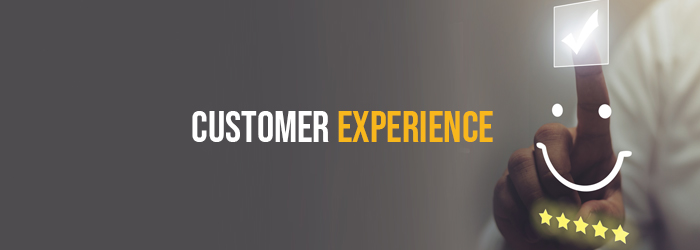
What Current Research Says About Customer Experience
Customer experience (CX) is a well-established factor that drives a businesses’ success. A better customer experience means happier customers, positive word-of-mouth, greater brand loyalty--all translating to higher sales. A 2018 PwC consumer intelligence series report, “Experience is everything,” sought to uncover what truly makes for a good customer experience and if the experience really matters.
Here are a couple of points from the report that serve to illustrate the value of a positive CX and the disconnect customers are feeling when it comes to their experiences today:
- 73% of people call out customer experience as an important factor in how they choose between companies. But only 49% of U.S. consumers say companies actually provide a good customer experience today.
- 43% of consumers would pay more for greater convenience and 42% would pay more for a friendly, welcoming experience. And, among U.S. customers, 65% find a brand’s positive experience to be more influential than advertising.
So, what constitutes a good CX? Turns out, we find that many of the factors can be directly or indirectly influenced by what happens in your waiting lines. According to another new study released in November 2018, 86% of U.S. consumers have left a store due to long lines in the last 12 months. With customers leaving empty handed, retailers are losing an estimated $38 billion in potential sales.
With these facts in mind, we pulled five of the key takeaways from the PwC report and looked at how these principles of customer experience might be impacted by your queuing strategy.
1. Customers will pay more for better experience.
Your investment in upping your CX game will pay off -- to the tune of up to a 16% price premium. This is especially true for luxury and “indulgence” purchases. In the U.S. coffee commands an 18% price premium for brands that provide a positive customer experience. That’s a significant reward for getting CX right!
Queuing Implication:
“Speed” and “Convenience” are two of the top elements of customer experience. Those elements can be largely influenced by the formation and operation of your queues. An investment in your queue can pay off in the form of a better CX and price premiums to match.
2. Bad experiences drive customers away faster than you think.
You might be surprised to learn just how quickly a bad CX can turn a potential or existing customer away. For good. The PwC study found that, in the U.S., 59% of customers will walk away after several bad experiences, 17% after just one bad experience. Globally, 32% of all customers would stop doing business with a brand they loved after one bad experience.
Queuing Implication:
We know that when it comes to queuing, a bad experience can be something as simple as an unsightly waiting line. According to a TimeTrade survey of business customers, the average person is not willing to wait more than 10 minutes for service. Other research shows nearly half of all customers will actively avoid a retailer or brand in the future if their wait time exceeded five minutes. Whether it looks too long, too unorganized, not properly staffed, or whether the line actually is too long, the CX suffers and customers are lost.
3. Customers want to feel appreciated.
Everyone wants to feel appreciated, right? Turns out, meeting this core desire is the way to win the experience battle. When customers feel appreciated, they reward their chosen companies with more of their spending dollars.
Queuing Implication:
Long waiting lines can make customers feel you don’t care about them. And the resulting dissatisfaction of this feeling can cost you return customers, word-of-mouth referrals, and market share. Adding to the weight of the PwC report, additional research from NewVoiceMedia’s 2018 “Serial Switchers” report found U.S. businesses lose an estimated $75 billion in sales annually due to poor customer service. This is up from $62 billion in the company’s 2016 report.
4. Human interaction still matters.
While businesses are rushing to deploy technology and automate, automate, automate, a meer 3% of U.S. consumers say they want their experiences to be as automated as possible. Sure, they’re engaging with technology like never before, but the availability of human interaction is still a key factor in their experience, according to PwC.
Queuing Implication:
Technology, such as people counting, virtual queuing, and automated call-forward systems, are helping to address many areas of the customer queuing experience. But they are also best employed to empower agents, cashiers, and service professionals to better serve customers. Look to technology to improve speed and convenience, but recognize it’s the ultimate service encounter that still makes a difference.
5. Your CX needs improvement.
Yes, you. Even the most well-attuned brands have room to improve the CX. As expectations continue to rise among consumers, the bar will only continue to creep higher. Not even half (49%) of customers in the PwC study agreed that companies provide a good customer experience today.
Queuing Implication:
Every company is different and every queue is different. Take the time to understand your customer expectations and limitations when it comes to queuing. How can you improve? Tools such as queue analytics can help you understand the factors that cause customers to renege or balk and those that facilitate conversions and return visits.
Customer experience matters, yes it does. Now the question is, how will you up your game? Hopefully, the research and implications presented here will help inspire your organization’s continued commitment to putting the experience first.
SUBSCRIBE
Subscribe to stay up-to-date with new products, resources information and news.
RECENT RESOURCES
Theft at the Register: How Strategic Queue Design Protects Profits
ViewRapid Deployment Crowd Control: JetTrac Portable Barriers For The Biggest Spaces
View4 Psychological Reasons Your Customers Hate Waiting In Line
ViewFrom Bleachers To Bookstores: 4 Campus Crowd Control Solutions
View








